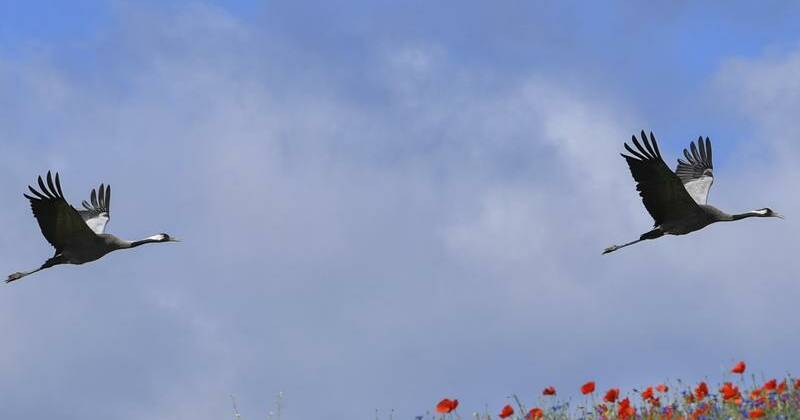
More than 1,000 cranes are believed to have died due to a significant outbreak of bird flu near Berlin. According to conservationists from the Rhinluch Species Protection Centre, a total of 839 dead cranes have been counted since Sunday in a pond area in Linum, located approximately 30 kilometers northwest of the German capital. Norbert Schneeweiß, the head of the centre, indicated that the total number of infected animals could reach around 1,500.
In a statement, Schneeweiß expressed concern over the ongoing situation. “We are still surrounded by dying animals,” he noted, highlighting the challenges faced by the recovery team. This group, which has been working tirelessly for several days, is fully equipped with protective gear and must disinfect themselves after handling the birds. “It is dramatic for the cranes. But it is also taking a toll on the helpers,” he added.
The scale of the mortality among the cranes has prompted calls for professional assistance. Schneeweiß emphasized, “This is now really a case of mass mortality. We need professional support.” Local authorities have reached out to the fire brigade for help, while hopes for technical support at the federal level are ongoing. The situation has also led to the deployment of a drone to monitor the affected area.
Each year, tens of thousands of cranes migrate through the state of Brandenburg, which surrounds Berlin, on their journey to southern wintering grounds. Conservationists are increasingly worried that other bird species may also be at risk. Ravens and birds of prey that feed on carrion are currently active in the region, raising concerns about the spread of the virus.
Several states in eastern Germany have reported elevated crane mortality rates amid recent bird flu outbreaks. The Friedrich Loeffler Institute (FLI), the federal authority responsible for monitoring avian diseases, confirmed the presence of the highly pathogenic avian influenza virus, known as HPAIV of subtype H5N1, in crane samples from four states.
In response to the outbreak, the FLI has raised its risk assessment for poultry farms from “low” to “high” and for wildfowl from “low” to “moderate.” While bird flu poses a significant threat to poultry and wildfowl, it is considered harmless to humans. The institute recommends the rapid removal of carcasses to prevent further transmission of the virus. It also advises individuals, particularly poultry farmers, to minimize contact with potentially infected birds.
The situation continues to evolve as conservationists and authorities work to manage the outbreak and protect both wildlife and public health.






